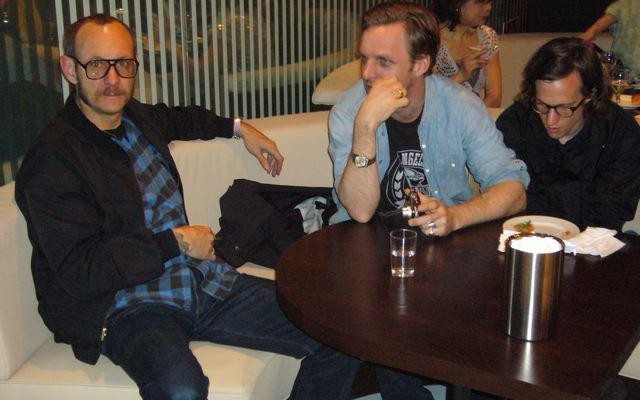
Blogs
Why Does the Fashion Industry Protect Alleged Sex Offenders Over Models?
Last month, clothing retailers American Apparel and Aldo fired fashion photographers Terry Richardson and Dov Charney for sexually harassing models. Several models have spoken out about their inappropriate behavior over the last few years, so why did these companies wait until now to react? Justice didn’t last long in Charney’s case, however, as the American Apparel founder and CEO was rehired a week later as strategic consultant while the company reviews any past accusations of sexual harassment.
The modeling industry is one of the few professions where workers are not always treated like real people, because the job description mostly entails selling their bodies. Until fairly recently, there were few if any laws protecting model’s rights. Last year veteran model Coco Rocha and the Model Alliance helped pass a law in the state of New York recognizing models under the age of 18 as child performers, limiting the number of hours they are allowed to work. The Model Alliance has also drafted a Model’s Bill of Rights stating that agents and photographers are to maintain a professional relationship with the models they work with, and it also calls for models to be informed ahead of time if a shoot will involve nudity so they can give prior consent. No model under the age of 17 can pose nude or semi-nude.
But there is also a bigger issue at hand: the female model’s word against that of these reputable male photographers. In this interview with HuffPost Live, Model Alliance founder Sara Ziff explains why she will never work with Richardson again and why models may feel pressured to put themselves in compromising positions, when working with photographers like him.
Ziff mentions the Model Alliance’s amnesty service as a way to provide legal aide to models who have been taken advantage of by photographers, since there are no official laws to protect them in situations like this. The Model Alliance’s efforts are certainly a step in the right direction, but potential clients like Harper’s Bazaar, American Apparel, and Aldo ultimately have the power to refuse to work with alleged offenders. These companies most likely have a zero-tolerance policy for sexual harassment protecting all of their other employees, so why not their models too?
Somewhere along the way, an inherent double-standard formed in the industry. Despite the decent amount of women in corporate fashion positions, the male gaze still governs a lot of what we see in magazines. These models lose their rights as humans because someone like Terry Richardson is an untouchable fixture in the industry. Ziff mentions that a model’s career isn’t really legitimized until she shoots with Richardson. Models may feel obligated to do whatever he tells them to do and he clearly takes advantage of that if he tries to engage in sexual activity with them.
If you need further convincing that there’s a double-standard, here are some of Richardson’s ads with the female models replaced with men.

Courtesy of Lauren Wade via Takepart
Notice this ad blatantly says “For Men.” Fashion is stereotypically a women’s industry yet most ads appear to be created for the male gaze. Is the fragrance for men or are those breasts for men?
Meanwhile, some women have defended Richardson when he’s come under fire. Musicians Miley Cyrus and Sky Ferreira are publicly known to be friends with the photographer and continue to work with him year in and year out. Ferreira recently claimed, “I have never been forced or manipulated into anything. I made a music video with him and I have never felt uncomfortable with Terry and had 99 percent of the creative control.” Perhaps this is because artists are protected by their own celebrity and do not have the same sense of anonymity as a model would. Someone like Richardson may see a model as just a face or body, whereas he may want to go out of his way to please a famous client like Cyrus or Ferreira.
Charney and Richardson have been able to keep their jobs for so long, despite these allegations because they have taken advantage of women whose jobs involve using their own bodies to market a product. Both women and men in the industry, however, need to realize that models are not mannequins, they are people employed to do a job that happens to involve their bodies. The job description by no means includes having their bodies violated for the pleasure of others. Ziff says it herself: “The choice between an uncomfortable sexual situation and your job, that’s the definition of sexual harassment.” If sexual harassment is unacceptable in all other workplaces, it should be unacceptable in these models’ line of work as well.
The Model Alliance is definitely taking a step in the right direction by offering a safe space for models to turn, but in order to guarantee absolute safety in their workplace, legal action must be taken. The laws passed by the state of New York also only really protect underage runway models. Sexual harassment issues lie predominantly with print models, and there need to be laws to protect them both inside and outside the studio. Not all models may belong to the Model Alliance, so if there were official laws protecting them, they might not be so afraid to speak up about harassment.
While it may be difficult to enact such regulations on an international level, the Model Alliance could at least start on a national level in collaboration with the Council of Fashion Designers of America. The industry has a responsibility to protect all of its employees, and that includes its models, the literal faces of fashion.
—
Katherine Fabian (@kafernn) is a recent graduate of Fordham University’s College at Lincoln Center and is currently applying to law schools, freelance writing, and teaching yoga. She hopes to one day practice fashion law and defend the intellectual property rights of designers.
Featured Image Courtesy of [American Apparel via Flickr]








Comments